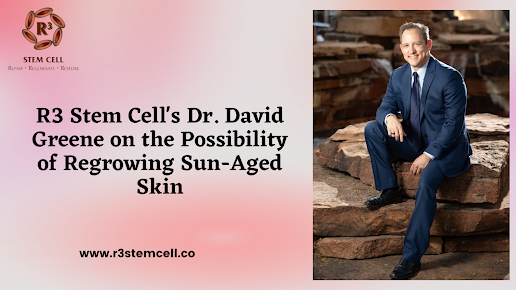R3 Stem Cell's Dr. David Greene on the Possibility of Regrowing Sun-Aged Skin
The difference between adult and embryonic stem cells
Understanding the differences between adult and embryonic stem cells is essential for those considering stem cell treatments. Adult stem cells, like those at R3 Stem Cell, are obtained from adults and can differentiate into many other types of cells. On the other hand, embryonic stem cells are pluripotent and derived from embryos in the early stages of development.
Adult stem cells have specific properties that allow them to regenerate and differentiate into other types of cells. They can be found in several organs, such as the brain, heart, liver, and skin, and they have a limited ability to divide into specific cell types. On the other hand, embryonic stem cells can differentiate into virtually any type of cell and reproduce indefinitely. They are less specialized than adult stem cells and are more susceptible to mutations.
Both adult and embryonic stem cells are used for medical treatments, but each has advantages and disadvantages. For example, research suggests that adult stem cells may be more effective when targeting specific ailments, while embryonic stem cells may be better suited for tissue regeneration or organ transplants. The team at R3 Stem Cell is committed to researching and utilizing adult stem cells to help patients regain their health and quality of life.
What can stem cells be used for?
Stem cells have a vast potential for medical treatments and research. For example, in the realm of skin regeneration, R3 Stem Cell is leading the way with research on using stem cells to regenerate sun-aged skin. Stem cells can act in various ways, from aiding tissue regeneration and repair to providing new blood vessels.
In addition, stem cells can create new organs, treat neurological diseases, and even help cure certain types of cancer. The possibilities with stem cell research are nearly endless, and R3 Stem Cell is continuously researching new ways to utilize stem cell technology to provide revolutionary treatments.
The potential of stem cells for regenerating sun-aged skin
Dr. David Greene of R3 Stem Cell recently revealed the possibilities of stem cells to regenerate sun-aged skin. He explains how adult stems cells, or Mesenchymal Stem Cells (MSCs), can significantly restore skin's youthful and vibrant state.
MSCs are found in all adult tissues, including skin, and have the potential to differentiate into many other types of cells. As a result, they can regenerate aging skin by stimulating the production of collagen, elastin, and other critical components of skin tissue. This process can help reduce wrinkles and make skin more youthful and radiant.
Dr. David Greene has successfully used MSCs to regenerate sun-aged skin. His study found that after being treated with MSCs, the microscopic appearance of the skin was drastically improved, resulting in a more even texture, increased firmness, and decreased wrinkles. He also notes that this treatment is safe, non-invasive, and requires little downtime.
.
At R3 Stem Cell, Dr. Greene and his team are committed to helping people reclaim their youthful glow through stem cell treatments. Their innovative approach to stem cell therapy revolutionizes how skin aging is treated.



Comments
Post a Comment